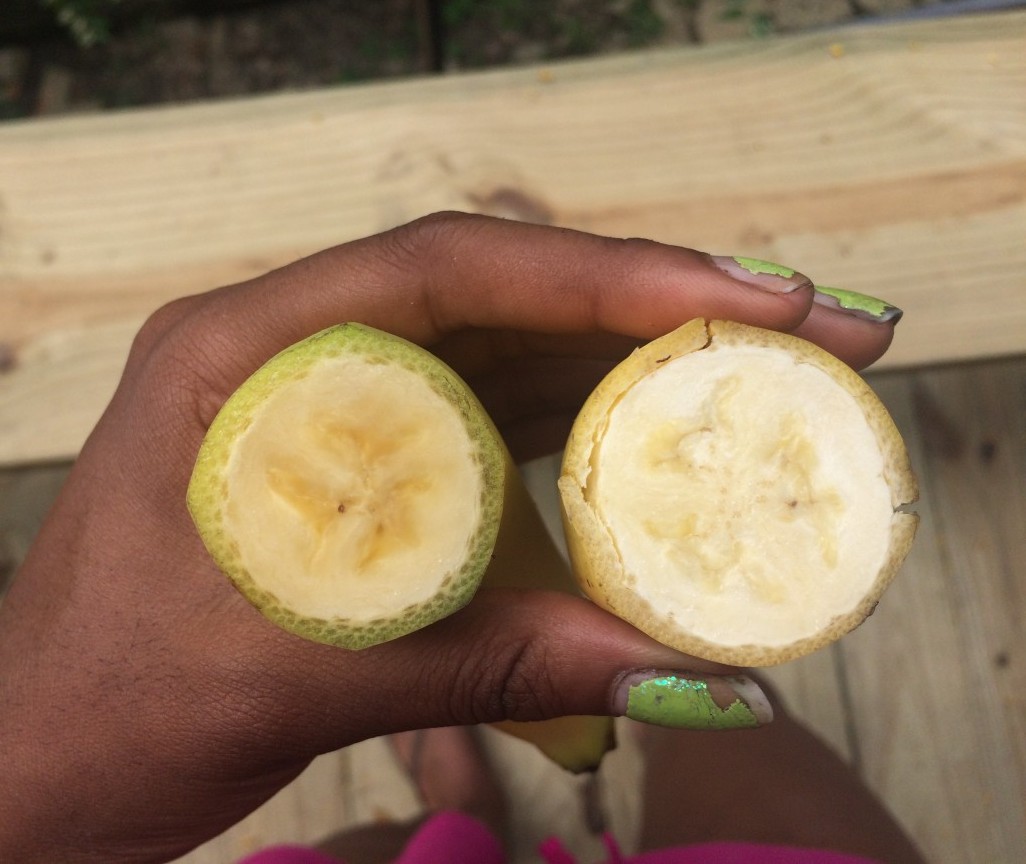Cavendish bananas are the only banana variety exported across the world, and the only banana widely available in the contiguous United States. Americans on average consume about 26 pounds of bananas each year (Bananaland). Yet the very banana so many Americans know and love may soon become extinct. While we garnish our cereal bowls and fruit salads, banana scientists across the globe are frantically trying to create hybrids that are resistant to Panama disease, a lethal pathogen responsible for the demise of the Gros Michel banana.
Before the Cavendish banana became the staple fruit of almost every market in America, there was another banana that held its place: the Gros Michel. From the late 1800s to the 1960s, the Gros Michel was the only banana exported in the global banana market. America was introduced to bananas in 1870 when a Cape Cod sea captain named Lorenzo Dow Baker brought 160 bunches of Gros Michel from Jamaica to New Jersey by sea; a nearly impossible feat. This variety had a creamier texture and much more intense fruity flavor; it also produced a lot fruit and endured the packing and shipping process well (Setzer). Unfortunately, towards the mid-20th century, a dangerous and incurable pathogen (then unnamed, but now known as the Panama disease*) wiped out the species, causing breeders to frantically search for a banana to replace it.
By the 1970s, the Cavendish effectively replaced the Gros Michel in the banana market. Cavendish bananas had a decent taste, a thick peel that was perfect for shipping, and produced just as many hands as the Gros Michel. Banana growers also thought Cavendish bananas were resistant to Panama Disease; however they quickly realized they were wrong. In the mid 1980s a new variant of the disease called Panama Disease Race Four, for which there is no known chemical treatment, broke out and wiped out Cavendish plantations in Sumatra and Malaysia. The disease continues to spread today in banana plantations across the globe.
Monoculture is another factor that is contributing to the downfall of the Cavendish variety. Most Cavendish farms contain all seedless clones that are grown from suckers, so they lack genetic variation (Setzer). This means that if a disease or insect comes along that can effect one Cavendish, the entire species can be wiped out. Fungicides and other chemicals have been tested, but they either fail or are toxic. Researchers and banana breeders across the globe are trying to interbreed different species in hopes of creating a resistant variety. The problem with this is the fact that most edible bananas have been bred to be seedless, making it difficult to create hybrids. Another issue is that bananas that are created this way are considered genetically modified foods, which are banned in many countries where bananas are imported.
What researchers are failing to realize is that there can’t be only one solution to the Cavendish crisis; there has to be many. Our reliance on one variety is what lead to its extinction of the Gros Michel, and the Cavendish banana will soon suffer the same fate. We have to look at multiple varieties rather than just one; but unfortunately that’s not how the global food market works. Suppliers are looking for uniformity (whether it be in size, taste, or shape) in order to make processing as easy and as cheap as possible. Cavendish bananas are bred to last 15 days for commercial standards, which partially explains why they have such a thick skin. Almost all of the varieties have experienced at Wildane (and many varieties throughout the world) have too thin of skin to handle being shipped overseas.

Cavendish banana (left) and apple banana (right). You can see that the Cavendish has a thicker skin and more yellow flesh, while the apple banana has a thinner skin and white flesh.
Perhaps the true solution to the Cavendish crisis is for us to not have bananas at all. They don’t grow well here, the companies that provide them are corrupt, and there are so many other native fruits that are just as tasty as bananas. Even then, we’d have to consider the fact that with the banana industry generating $5 billion a year, mass unemployment and poverty would occur if we were to withdraw from the market at this point.
*The disease affected bananas all over the world, but Panama was one the first countries to see entire plantations wiped out at such a rapid pace. This is why the disease is called Panama disease.

Leave a Reply